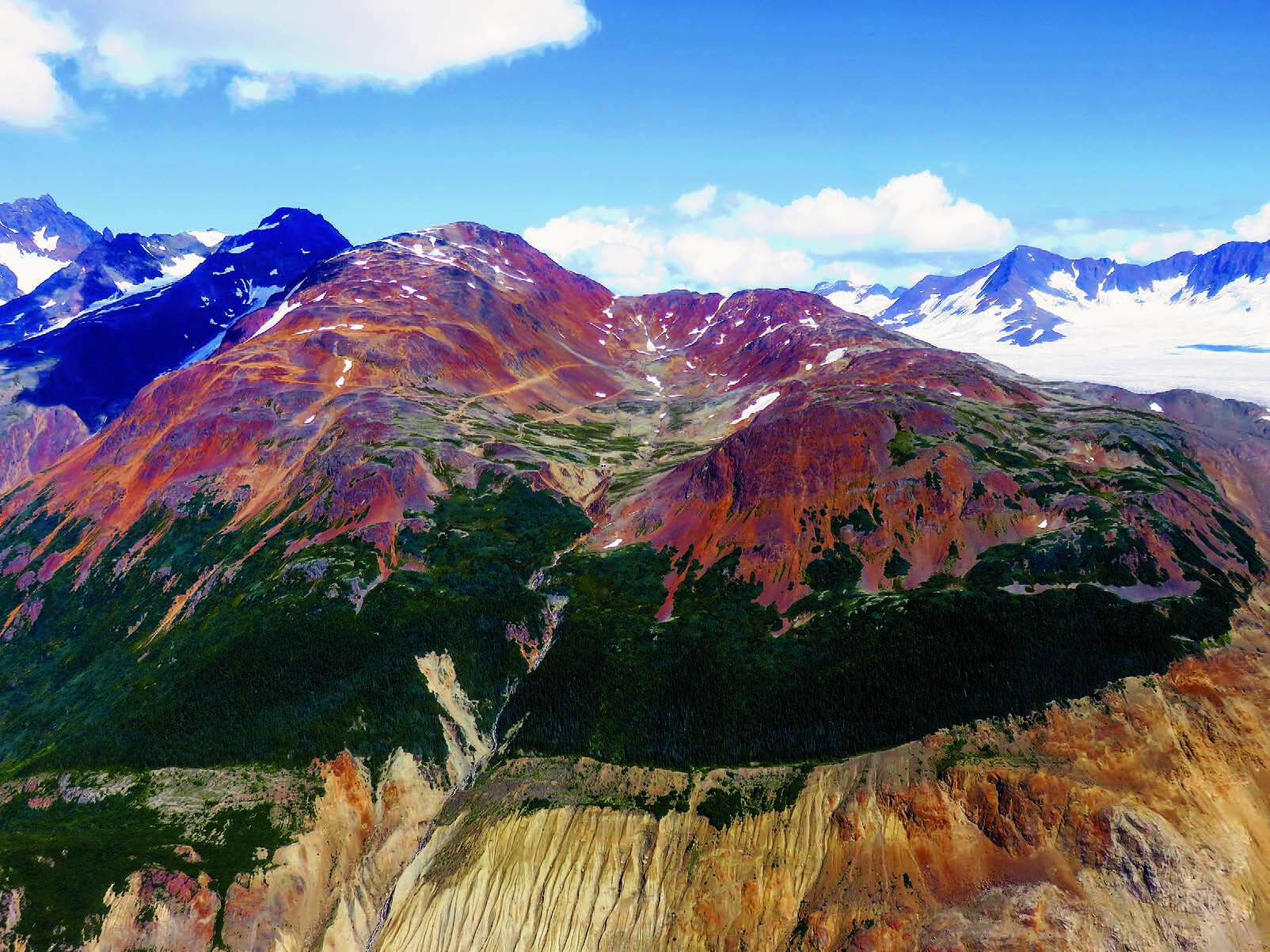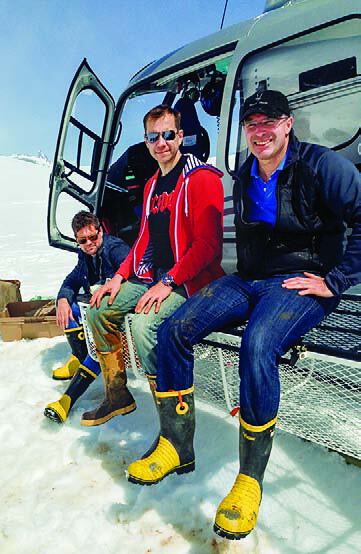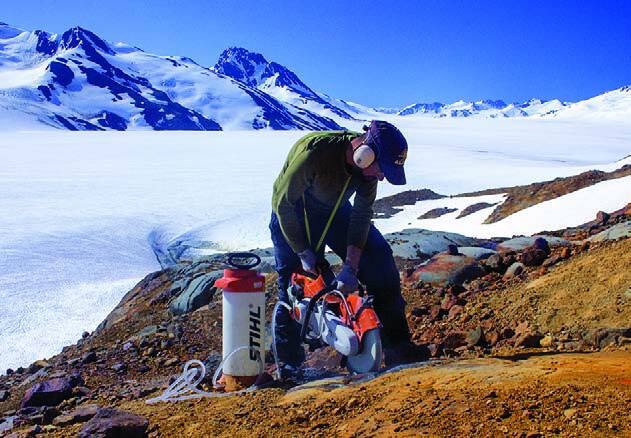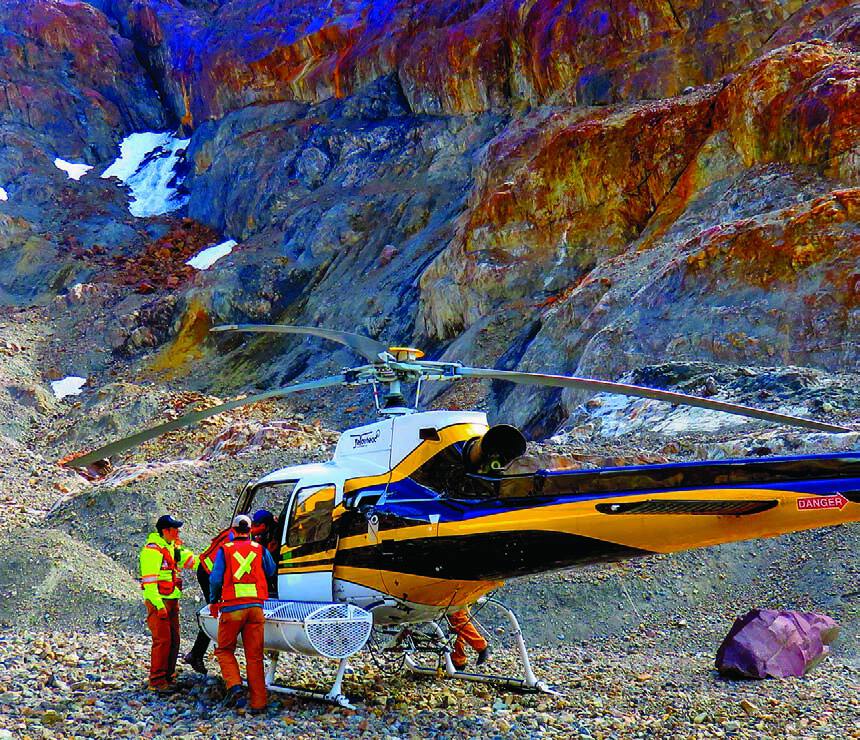
Vancouver-based IDM Mining Ltd. recently announced surface sampling results from its Red Mountain underground gold project in northwestern British Columbia. IDM began surface drilling on several targets at Red Mountain in summer 2014.
Highlights of the recent work from three new zones include 10.6 grams/ tonne gold over 3.94 metres in channel samples at the Wyy Lo’oop prospect in the Cambria Zone, and 10.9 grams/tonne gold over 8.13 metres in channel samples (Uxlox prospect, Cambria Zone). Eight of 10 grab and channel samples assayed more than 1.0 grams/tonne gold, up to 11.4 grams/tonne (Fridge Zone).
IDM president and CEO Rob McLeod said in an announcement, “The discovery of high-grade outcropping sulphides 500 metres to the east and on strike from the Marc Zone resource is encouraging. We look forward to drilling the initial holes at the Wyy Lo’oop and Uxlox discoveries at the Cambria Zone [in the near future].”
The positive drill results came on the heels of a July preliminary economic assessment (PEA) of Red Mountain that showed what the company says are the project’s robust economics. The PEA outlines Red Mountain’s expected low capital and operating costs, robust economic potential and near-term production profile.

Based on a gold price of US$1,250 per ounce and a silver price of US$20 per ounce, the pre-tax, base-case economics indicate a net present value (NPV) of $90 million at a five per cent discount rate, an internal rate of return (IRR) of 43.3 per cent and a 1.3-year payback of initial capital. In addition, the after-tax, base-case economics indicate a NPV of $58 million at a five per cent discount rate with an IRR of 32.8 per cent and a 1.5year payback of initial capital.
Because of the wide nature of the mineralized zones, the majority of the deposit is amenable to bulk underground long-hole mining methods. The estimates are based on a production rate of 1,000 tonnes per day.
The life-of-project direct operating cost of Red Mountain is estimated at US$516 per ounce of gold recovered. Net of the silver byproduct, costs are US$455 per ounce. Initial capital costs are estimated at US$76 million (including 15 per cent contingency). The economic model assumes base-case gold recovery rates ranging from 82 to 93 per cent for gold, and 71 to 86 per cent for silver.
Mine life is estimated at five years, with average annual payable production at 55,500 ounces of gold and 171,000 ounces of silver. The mine is expected to operate nine months out of the year, with annual closing from December to the end of February for maintenance and to avoid the high snowfall of northwestern B.C.

The PEA was prepared by Vancouver-based JDS Energy and Mining Ltd., with input from a number of other specialized consulting and advisory firms in infrastructure development, metallurgy, environmental science and geology.
“Completion of a positive preliminary economic assessment is a critical milestone for IDM,” says McLeod. “With capital and operating costs estimated to be among the lowest in the global gold industry, and a near-term development plan that provides a clear path to commercial operations, the [PEA] outlines both the potential economic and technical viability of the project.”

McLeod says that with additional drilling and engineering work, he expects the project’s economics can be made even better than they already are. “There are two parts to the Red Mountain story,” he says. “First, there’s enough gold there for a $75-million mine. But Red Mountain is also part of the largest mineralizing system in B.C., with a major exploration upside. That’s thanks to the rapid glacial retreat in the area, which has exposed new rocks.”
The 17,125-hectare Red Mountain gold project is located 15 kilometres northeast of Stewart. Discovered in 1989, the property was explored extensively until 1996 by Lac Minerals Ltd. and Royal Oak Mines Inc. The companies completed extensive engineering and environmental baseline work, as well as more than 2,000 metres of underground development and 466 diamond drill holes.
Additional studies were carried out by Seabridge Gold, Inc., North American Metals Corp. and Banks Island Gold Ltd. between 1996 and 2014, when IDM purchased the property.
Many gold mineralized zones occur on the property, including three with established resource estimates. The three zones (Marc, AV and JW) have been folded, and are separated by dipslip fault zones. The zones are moderately to steeply dipping, roughly tabular, and vary in width from one to 40 metres, averaging about 15 metres in thickness. Gold and silver mineralization is associated with stockworks, disseminations and patches of coarse grained pyrite. Alteration facies includes strong quartzsericite alteration.
